Plant History and Functions
WWTP Superintendent
Clinton Farley
Contact Clinton by email with any questions, or to schedule a plant tour.
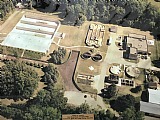
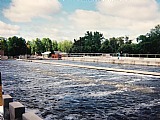
History
The primary function of the Almont Wastewater Treatment Plant is to assure long-term water quality protection for the North Branch of the Clinton River.
The original Almont Wastewater Treatment Plant was completed in 1958. The facilities included primary settling, a trickling filter to biologically remove organic matter, a final settling tank, and chlorination facilities. When improved treatment was needed to comply with new stringent water quality standards of the National Pollutant Discharge Elimination System Permit (NPDES), a new plant was constructed and first placed into service in April of 1989, with a capacity of 370,000 gallons per day. It was anticipated that this plant would meet the anticipated growth of the Village through the year 2000.
The upgraded facilities were designed to remove solids and organic matter from the wastewater stream and to also remove phosphorus and ammonia nitrogen compounds, which promote plant life in the Clinton River. These compounds also inhibit recreational use of public waters and endanger aquatic life in the receiving stream. The plant included mechanically a cleaned fine bar screen, a vortex grit removal system, secondary treatment capabilities(a biological process in which organic matter and soluble and suspended solids are removed), two oxidation ditches to provide a medium where bacteria and micro-organisms can feed on dissolved organic material and ammonia nitrogen, two secondary clarifiers, a tertiary treatment (sand filters) system, ultraviolet disinfection, a capacity for the storage of six months of sludge, and a modern laboratory with analytical instruments capable of performing all of the required chemical and biological tests. The facility has met or exceeded all standards set by the state and federal regulatory agencies.
In 2004 a 2,000,000 gallon equalization basin was constructed along with an expansion of the sludge storage system so that the treatment plant could operate in a more cost-effective manner. This basin holds excess flow and allows the basin's stored volume to slowly drain diluted sewage back through the plant. The plant influent pumps were also upgraded and the plant now has a design average flow of 470,000 gallons a day.
The Wastewater Treatment Facility must operate in accordance with the National Pollutant Discharge Elimination System Permit (NPDES). The NPDES permit mandates how the treatment facility must remove pollutants from the community's wastewater. During normal flow periods the discharge is in compliance with the NPDES permit, however, during excessive wet weather and floods' the treatment works has been overloaded with storm and groundwater (infiltration). This produces flows that tax our treatment capacity. In response, the Village of Almont DPW and WWTP are conducting a downspout disconnection awareness program that encourages residents to disconnect their downspouts from the sanitary sewer system.
The DPW and WWTP staff is also conducting inspections to the collection system to ensure a reduction in infiltration. Anyone that knows or suspects an infiltration problem is encourage to contact the Village.
Ditch Project
Ditch Before Repairs
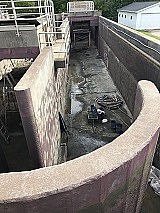
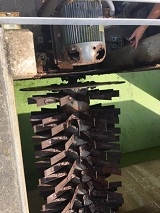
Ditch During Repairs
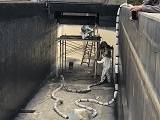
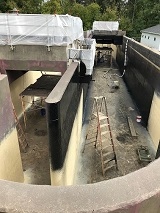
Ditch After Completion
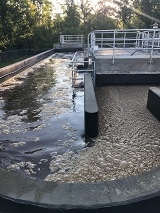
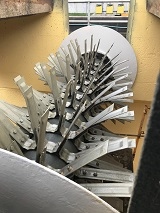
Clarifier
Clarifier Before and During Work
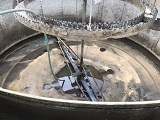
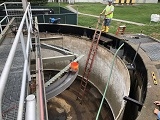
Clarifier After Completion
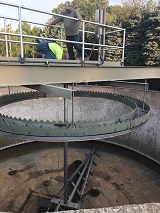
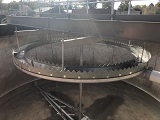
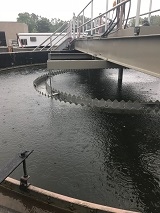
Lift Stations
The Village of Almont currently employs three full-time waste water operators who maintain the water treatment plant and four sanitary sewer pump stations. These stations are located on June Drive, E. St. Clair, Howland Road and Jonathon Drive. These pumps lift sewage from low areas to some of the 14 miles of gravity sewer line that the DPW maintains.
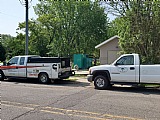
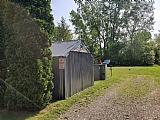
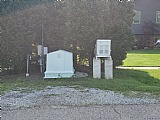
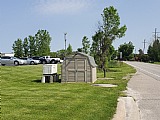
The Impact of Flushable Wipes
Please view the video below as it show the impact "flushable" wipes is having on our sanitary sewer system. This can also greatly impact anyone who has a septic system as well. The video shows that "flushable" wipes are not biodegradable and the damages they are causing within sanitary systems.
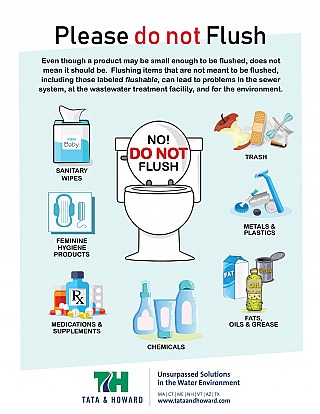
What Not to Flush
The GLWA recently put out a series of brochures on water and waste treatment systems. To view a brochure on what not to flush please click (here).
The Almont Police Department now has a Safe Medication Disposal box located in the Almont Village/Almont Township Municipal Building Lobby. This Box will move to the new Police Station when it opens. To see a list of accepted medications, please click on the Police tab located under Departments.